Category: Bikes Page 2 of 6
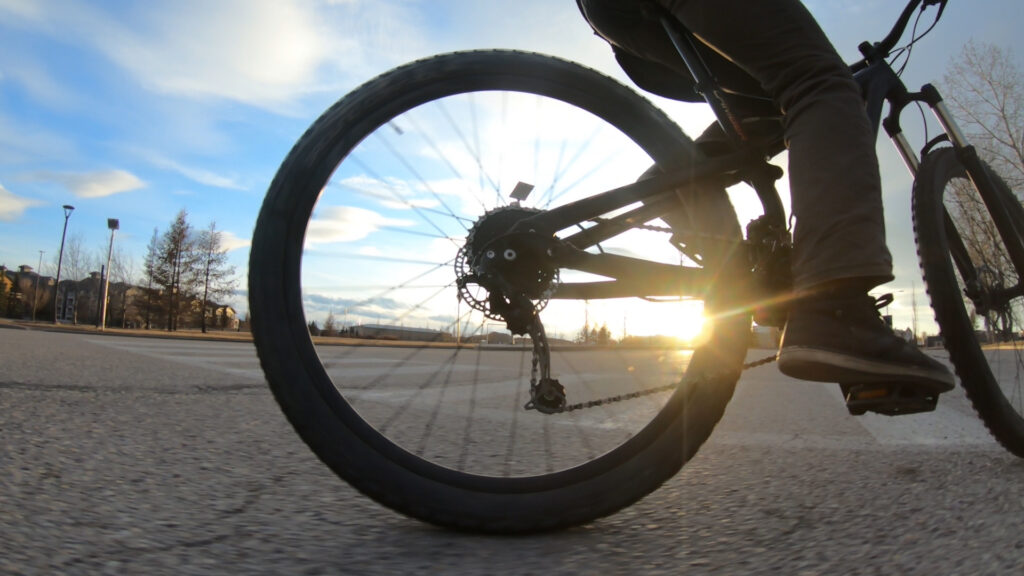
You’ve no doubt ridden a bike driven by a chain. But have you tried one that’s powered by a carbon-fibre belt?
Both power a bike using the same principles, but there are some fundamental differences between them, including the fact that most bikes in the world — in fact, nearly all of them — are driven by chains.
Yet, there remains a small and (maybe) growing subset of people who swear by belts these days. So here, I examine the differences between the two types and offer some advice for your bike commute.
Derailleur vs internal hub
You all probably ride a bike with a derailleur – don’t all us North Americans? — but consider this video an argument in favour of a gearing alternative: the internal hub. These devices to change gears on your bike have long been ignored by those on the athletic side of cycling, but if you’re a commuter or urban transportation cyclist, here’s a look at why you might want to consider an internal hub.
Please subscribe to my YouTube channel.
Follow Tom Babin on Twitter, Facebook, Instagram or Medium.
You can also follow Shifter on Facebook or Medium.
Tom Babin is the author of Frostbike: The Joy, Pain and Numbness of Winter Cycling.
My winters changed forever with a smiling dude with curly hair standing behind a bike in the lobby of a conference centre in Minneapolis, Minnesota.
It was an early edition of the Winter Cycling Congress, an annual event that brings winter bike lovers from all over the world together to discuss their favourite misunderstood transportation mode. I was on hand as a journalist-turned-speaker and the smiling dude was David Weiner of Priority Bicycles. Normally, bike conferences are filled with all kinds of bike-industry types flogging their wares, but something about Weiner’s bike stopped me.
I took a closer look and realized it was all there – all the ingredients in my perfect-fantasy winter bike, a wish-list honed over a decade of joy and heartbreak as a year-round bike commuter that included components imagined to withstand the bane of my winters: rust. It had an aluminium frame, a carbon belt drive instead of a chain, internal gears, disc brakes and great fenders. Hurry up and take my money, Mr. Weiner, please.
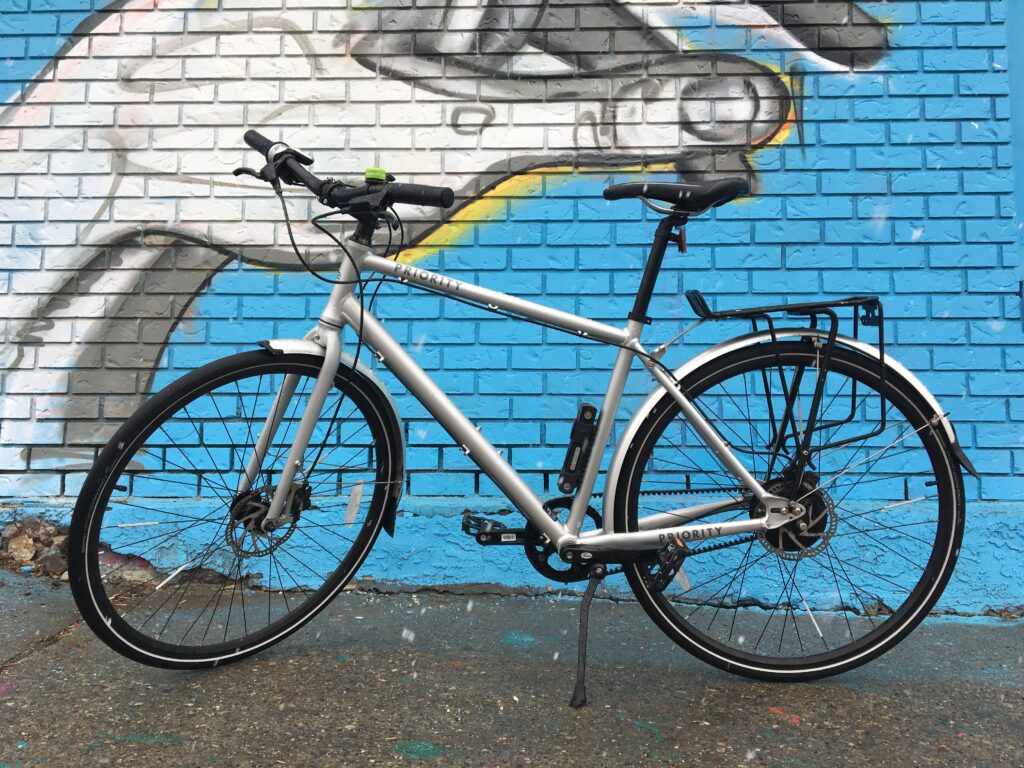
My original Priority Continuum. Photo by Tom Babin.
And for three winters I rode that Priority Continuum happily, until Weiner emerged again in the form of an email late last year letting me know that he had been hard at work improving the Continuum. The result was a new, improved bike. And did I want to try it? Hurry up and take my money, Mr. Weiner, please.
That improved bike is the Priority Continuum Onyx, and I’ve been riding it for the past few weeks through a Canadian winter. Basically, this is an upgrade to what I hoped, and what grew into, my perfect winter bike. Could it possibly be improved?
First, the upgrades. The Onyx has some differences from the early edition Continuum, and I’ve found most of them to be decided improvements, including the advanced badassness of the paint job (flat black gets two thumbs up from me).
First up is visibility, an important factor when you spend much of the winter riding in darkness. There are two significant improvements in the Onyx. First, is the esthetic design of the bike, which includes significant swaths of reflective paint, which is invisible unless light is directed at it (thereby keeping the rider illuminated without ruining the badassery of the colour scheme). Secondly is that the Onyx comes installed with both front and back lights powered by hub dynamos. In other words, the bike has lights that are powered by your pedalling, which means you never have to worry about external lighting. Hub dynamos are the norm in many bike-friendly countries, and it while the lights aren’t the brightest in the world – I’ll continue to use secondary external lights during the depths of winter – not having to remember to bring your light, charge it and turn it on is something you don’t know you love until you have it. It’s great.
There are a few design tweaks to the bike as well. The seat post is carbon fibre, a material that, when used in commuter bikes, normally prompts eye-rolls in me (do you really need to save a few ounces in weight on a bike that is saddled with your computer and lunch?). However, the back end of the Continuum is heavier than most bikes because of its drivetrain (more on that later), so I’ll take this as a welcome addition. The design also tweaks the dropouts in ways that simplify the addition of fenders and carrying racks, all of which are nice refinements.

Riding the new Priority Continuum Onyx. Photo by Tom Babin.
My favourite part of the original Continuum was always the drivetrain because it felt built for my winter. Instead of a rust-prone chain, it’s powered by a rust-free carbon belt drive, which has performed admirably (mostly) for the three years I’ve ridden it. The new Onyx is also built with an internal hub that uses Nuvinci technology – rather than a derailleur and stepped gears, the hub loosens and tightens based on tension, so the rider has almost an infinite number of gears. One improvement to the Onyx is that the range of that drivetrain has improved, meaning the rider can now shift to higher and lower “gears” than was possible in the past. The limited range on the old Continuum was a pet peeve of mine, and the new range is an improvement. It’s not perfect yet, but this is a winter bike, so rides are slower than summer rides anyway, so I can certainly live with this.
A note of caution: While I am a big fan of this drivetrain, it did pose a couple of problems in deep cold. During a particularly brutal sub -30 C (-22 F) cold snap one winter, the hub froze up on me a couple of times until the friction of my riding warmed things up. And I did snap the carbon belt in the extreme cold as well. Both problems are preventable – a little maintenance can keep the hub running and the manufacturer of the belt drives, Gates, does offer a cold-weather model. So be aware of this if you’re thinking about buying this bike.
There’s something a bit more intangible that I like about the Onyx as well. I find the Onyx to be a bit more efficient in the way it rides. It just feels like a cleaner, most productive bike to pedal, which is especially important in winter. I’m not sure how to account for this but the bike just feels like a more complete and refined package.
One final note on the new bike: Priority is an online bike seller, which comes with advantages and disadvantages. The key advantage is the price – at just over $1,000 US, this is a good price for a decent-quality commuter bike, especially one that seems to eat winters. The key disadvantage, other than having to assemble the bike yourself (which I quite enjoyed, in a DIY hunter-gatherer sort of way) is that it cuts out the local bike shop. Bike shops are essential to bike culture in a city, and it pains me to ride a bike that doesn’t involve a local connection. I try to support bike shops wherever I can, so this is something you should think about before buying a bike.
So did my perfect winter commuter bike improve? It certainly did, and I’m enjoying riding it through all that winter has thrown at me over the past few weeks. I wouldn’t say this is a universal winter bike because winter is so different everywhere. But if you ride through winters like mine, filled with sporadic snowfall, plentiful ice, and mountains of bike-destroying gravel, sand and salt, the new Priority Continuum Onyx should be on your shortlist.
Please subscribe to my YouTube channel.
Follow Tom Babin on Twitter, Facebook, Instagram or Medium.
You can also follow Shifter on Facebook or Medium.
Tom Babin is the author of Frostbike: The Joy, Pain and Numbness of Winter Cycling.
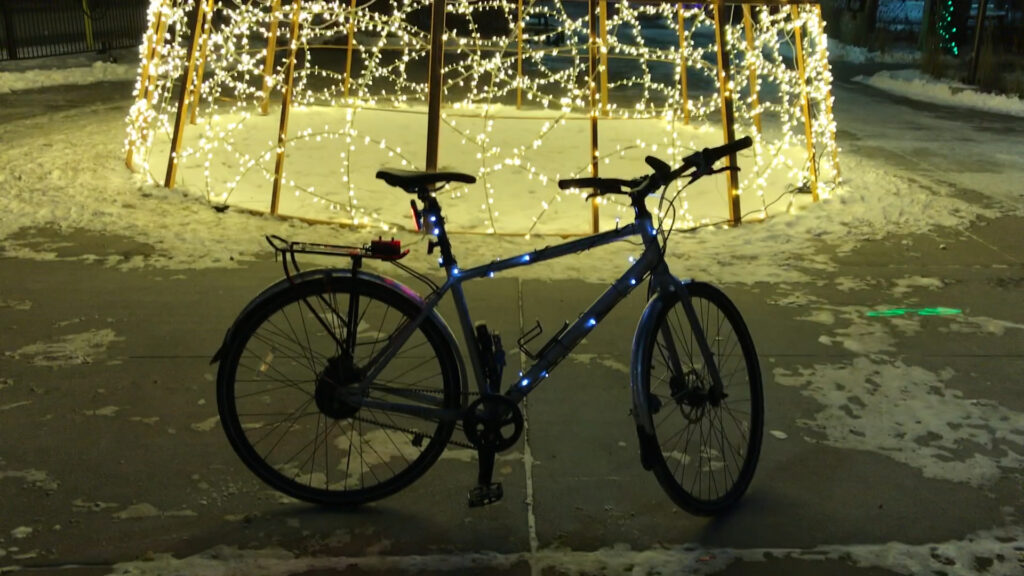
Decorating your bike for Christmas is fun, but can also help make you more visible.
I’ve always wanted to do this, but never quite got deep enough into Clark Griswold mode to get it done. But this is the year I decorate my bike with Christmas lights. This is mostly for fun, but being more visible on the roads during the dark winter months isn’t a bad thing!
Check out my video below to see how I did it (spoiler alert: It’s super easy!).
Please subscribe to my YouTube channel.
Follow Tom Babin on Twitter, Facebook, Instagram or Medium.
You can also follow Shifter on Facebook or Medium.
Tom Babin is the author of Frostbike: The Joy, Pain and Numbness of Winter Cycling.
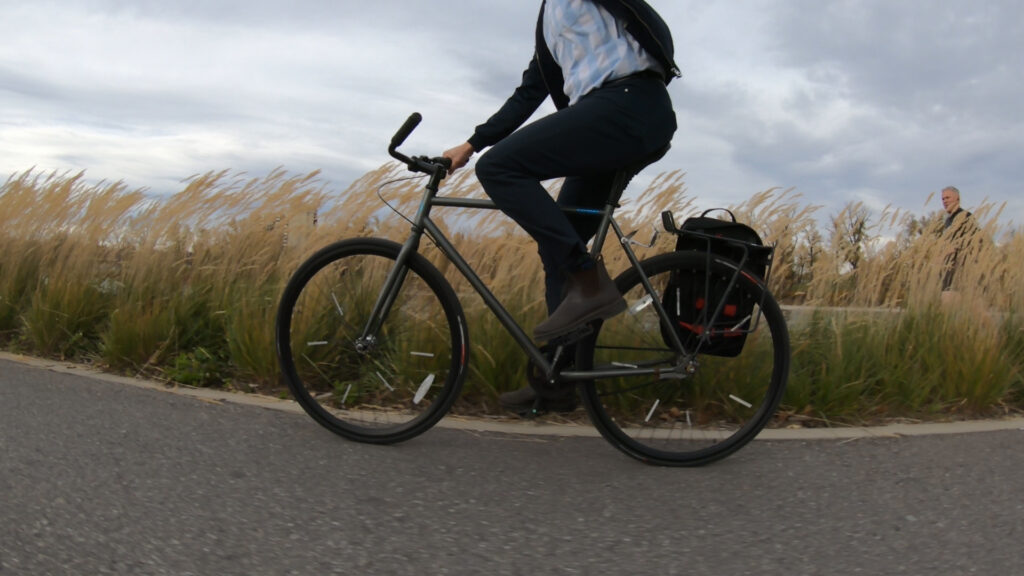
It’s an urban challenge we’ll all run into at some point: You need to get across the city quickly. What’s the best way?
To answer that, I decided to test three transportation options.
- My own bike.
- A dockless shared e-bike from Lime.
- A dockless shared e-scooter from Lime.
This isn’t only about speed. I’m also factoring in things such as costs and the all-important sweat factor. Any predictions?
Please subscribe to my YouTube channel.
Follow Tom Babin on Twitter, Facebook, Instagram or Medium.
You can also follow Shifter on Facebook or Medium.
Tom Babin is the author of Frostbike: The Joy, Pain and Numbness of Winter Cycling.
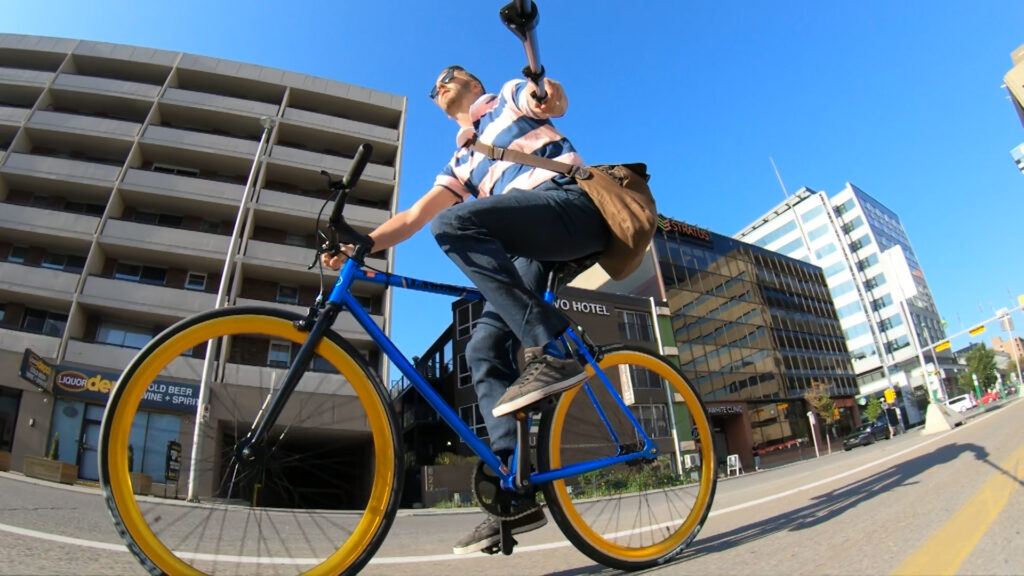
It’s the forgotten step-child of the bike-commuting world, overlooked in favour of flashier models loaded with extras, like, you know, gears and shifters.
But there’s something magical about the simplicity of a single-speed bike. Lacking derailleurs and all the associated mechanics that come with them, single-speeds are the kind of bike you never have to think about. They rarely need maintenance. Your gears never go out of tune. Your derailleur never clicks in maladjustment. Your cassette never gets clogged with mud or ice. It just works.
But is all that worth the trade-off of never having a second gear? That was the question that drove the latest video in my commuter-challenge series. The goal of this series is to give you information about different kinds of bikes so you can make better decisions about your bike life. So far, I’ve tested the speed, effort and overall ride of a number of bikes: Road bikes, city bikes, electric bikes, mountain bikes. This time, the wild card was the single-speed.
Check it out below. You can see the other videos in my series here.
Please subscribe to my YouTube channel.
Follow Tom Babin on Twitter, Facebook, Instagram or Medium.
You can also follow Shifter on Facebook or Medium.
Tom Babin is the author of Frostbike: The Joy, Pain and Numbness of Winter Cycling.
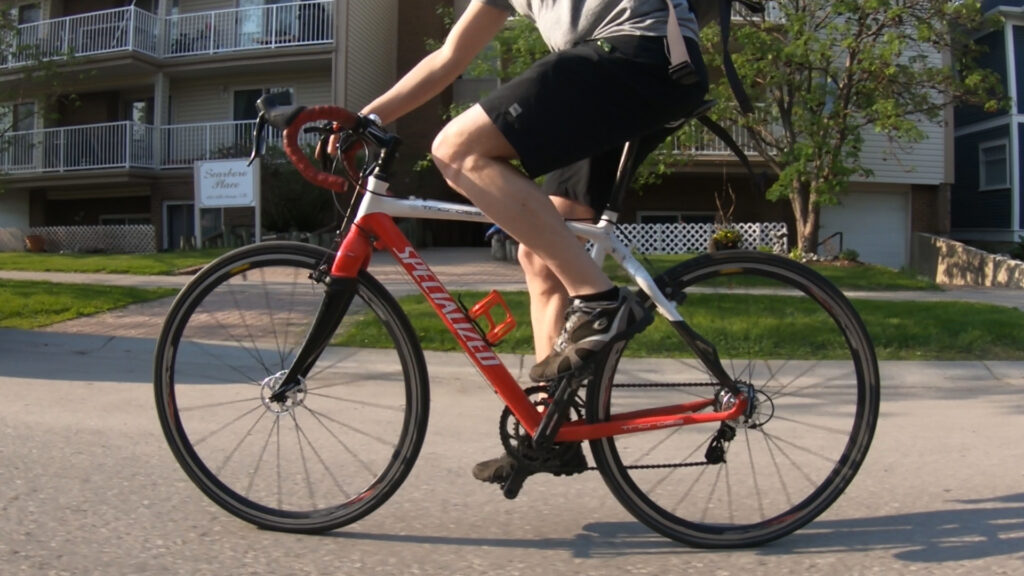
What’s the best bike for commuting? This is the second video in which I test different types of bikes on my commute. This time, instead of a mountain, road or city bike, like I did last time, I tested these bikes: A slow, comfortable city bike, a light and fast road bike and a pedelec , a.k.a an electric pedal-assist bike.
Which one is best? I measure my commutes on all of the bikes and compare the numbers.
If you don’t want to watch the
video, here are some of the numbers:
City bike: Riding time: 66:61, average speed of 20.2 km/hr
Road bike: Riding time: 58:65, average speed of 22 km.hr
Electric bike: Riding time: 56:31, average speed of 24.6 km/hr
Speed, however, is not the only factor in bike commuting. In the video, I also examine a number of other factors around bike commuting, such as comfort, costs and the sweat factor.
I hope this video helps you become a better bike commuters.
Also: You’ll probably notice that my math is weird on some of the calculations. I have an accumulated time of 58:65, for example, which should be expressed as 56:05. The larger point I’m trying to make still stands, but, yeah, I messed up.
Here’s my first bike commute challenge.
Please subscribe to my YouTube channel.
Follow Tom Babin on Twitter, Facebook, Instagram or Medium.
You can also follow Shifter on Facebook or Medium.
Tom Babin is the author of Frostbike: The Joy, Pain and Numbness of Winter Cycling.

True cargo bikes are amazing. They can haul just about anything, including furniture, children and that Tinder date you just swiped on. But their size can sometimes be limiting for those living smaller urban lifestyles. That’s why I wanted to try out this bike, the Tern GSD S00, a kind of smaller and more portable cargo bike. With features of a folding bike and a great Bosch electric pedal-assist motor, this is a pedelec that may just fit an urban life.
Also check out Power in Motion. This Calgary company loaned me this bike, and they do the most amazing overviews of all their bikes on YouTube. Great info (and they make amazing heated clothing too, for you winter riders).
Please subscribe to my YouTube channel.
Follow Tom Babin on Twitter, Facebook, Instagram or Medium.
You can also follow Shifter on Facebook or Medium.
Tom Babin is the author of Frostbike: The Joy, Pain and Numbness of Winter Cycling.

